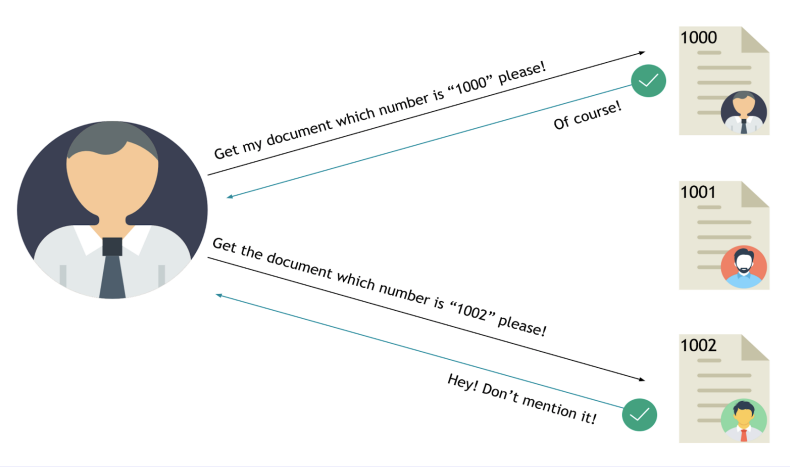How broken authentication vulnerabilities can compromise your cybersecurity
As businesses and individuals rely more on digital technology, the risk of cyber-attacks and data breaches increases. One of the most common ways hackers gain access to sensitive information is through broken authentication vulnerabilities. This vulnerability can allow cybercriminals to bypass traditional security measures and access confidential data, user accounts, and other critical systems. The impact of a successful attack on a broken authentication vulnerability can be severe, resulting in the loss or theft of sensitive data, reputational damage, and financial losses. So, let’s look at the dangers of broken authentication vulnerabilities, how they can compromise your safety, and how you can protect yourself and your business from these threats.
What are broken authentication vulnerabilities?
Shortly explained, broken authentication vulnerabilities occur when the authentication mechanism used to verify user identity is flawed or poorly implemented. This can happen for various reasons, such as weak passwords, insufficient encryption, or poor session management. For example, suppose a website allows users to log in using a simple username and password. In that case, a cybercriminal can easily guess the password or use brute-force attacks to access the user’s account.
Attackers can use automated tools to carry out these brute-force attacks, making it possible to guess passwords quickly. Another type of broken authentication vulnerability is session fixation attacks. In this type of attack, the hacker sets the user’s session ID to a known value before the user logs in. Once the user logs in, the attacker can use the known session ID to gain access to the user’s session. Similarly, if a website stores user passwords in plain text or weak encryption, attackers can easily steal them and use them to access other accounts or systems.
Broken authentication vulnerabilities can also occur in more complex authentication mechanisms, such as multi-factor authentication or biometric authentication. For example, if a multi-factor authentication system relies on SMS messages to verify user identity, attackers can intercept the SMS messages and use them to access the user’s account. Similarly, if a biometric authentication system is poorly implemented, attackers can use fake biometric data to bypass the authentication mechanism.

How do broken authentication vulnerabilities compromise cybersecurity?
The impact of broken authentication vulnerabilities can be severe, especially for businesses and organizations that handle sensitive data. By exploiting weaknesses in the authentication mechanisms, attackers can gain access to sensitive data and carry out a range of nefarious activities. Once attackers gain unauthorized access to an application, they can modify or steal data, plant malware, or perform other malicious actions that can compromise an organisation’s security. In the worst-case scenario, attackers could use the stolen data to carry out large-scale cyber-attacks, such as ransomware attacks or distributed denial-of-service (DDoS) attacks.
Moreover, successful attacks on broken authentication vulnerabilities can result in significant financial losses and reputational damage to an organization. In addition to the direct costs of recovering from a breach, organizations could face regulatory fines, legal fees, and loss of business due to damaged reputations. For example, if a healthcare provider suffers a data breach due to broken authentication vulnerabilities, they may be subject to HIPAA violations and face hefty fines and lawsuits.
Preventing broken authentication vulnerabilities requires a proactive approach to cybersecurity that emphasizes robust authentication mechanisms and constant vigilance against potential threats. This includes implementing multi-factor authentication, regularly updating authentication protocols, and educating employees on good security practices.
Real-life examples of data breaches caused by broken authentication vulnerabilities
Broken authentication vulnerabilities have been responsible for some of the most high-profile data breaches in recent years. Here are some examples:
In 2018, a massive data breach at Marriott International compromised the personal information of 500 million customers. The breach was caused by a vulnerability in the company’s Starwood guest reservation database, which allowed attackers to access guest records and steal sensitive data such as passport numbers and credit card information.
In 2019, Capital One suffered a data breach that exposed the personal information of 100 million customers. The breach was caused by a vulnerability in the company’s cloud infrastructure, which allowed an attacker to gain unauthorized access to customer data.
In 2020 and again in 2023, Twitter suffered a few data breaches that compromised the accounts of regular users and high-profile individuals such as Elon Musk and Barack Obama. The first breach was caused by a vulnerability in the company’s administrative tools, which allowed attackers to access user accounts and post tweets on behalf of the users. Meanwhile, the second time around, it was revealed that the breach occurred due to a security flaw in Twitter’s API, which was exposed for over six months, making it easy for hackers to exploit. The leaked data contained user names, email addresses, and real names, posing a significant risk to Twitter’s users.
In 2022, Crypto.com, a Singapore-based cryptocurrency exchange, was targeted by hackers who stole over $15 million worth of Ethereum (ETH) and $19 million worth of Bitcoin (BTC), as well as other cryptocurrencies worth around $66,200. The breach was due to the attackers bypassing the company’s two-factor authentication (2FA) system. Surprisingly, the hackers were able to gain access to user accounts by exploiting a vulnerability in the 2FA system, which was a major concern for the users of Crypto.com.
How to detect and prevent broken authentication vulnerabilities
Detecting and preventing broken authentication vulnerabilities requires a multi-layered approach involving technological solutions and good security practices. Here are some key steps organizations can take to detect and prevent broken authentication vulnerabilities:
Conduct regular vulnerability assessments: Organizations should regularly test their applications and infrastructure for vulnerabilities, including broken authentication vulnerabilities. This can be done using a combination of automated scanning tools and manual testing by experienced security professionals.
Implement strong authentication mechanisms: Strong authentication mechanisms, such as multi-factor authentication, can help prevent attackers from exploiting broken authentication vulnerabilities. These mechanisms require users to provide additional verification forms, such as a code sent to their mobile device, before accessing an application.
Regularly update authentication protocols: Organizations should stay up-to-date with the latest authentication protocols and security standards and regularly update their systems to ensure they remain secure. This includes implementing secure password policies, such as requiring strong passwords, forcing users to change their passwords regularly, and prohibiting common passwords.

Use session management techniques: Organizations should implement session management techniques, such as expiring sessions after a certain amount of time, to prevent attackers from exploiting session fixation vulnerabilities. This includes using session timeouts, cookie flags, and secure session tokens.
Educate employees on good security practices: Employees are often the weakest link in an organization’s security defences. Organizations should educate their employees on good security practices, such as not sharing passwords, avoiding public Wi-Fi networks, and using strong passwords.
Monitor for suspicious activity: Organizations should monitor their applications and infrastructure for suspicious activity, such as repeated login attempts or attempts to access sensitive data. This can be done using security information and event management (SIEM) systems and other monitoring tools.
The future of authentication security
Since cyber threats have become increasingly sophisticated, the traditional approaches to authentication security are no longer sufficient to protect against them. This has led to significant innovation and transformation in the field of authentication security, with new and emerging trends being explored to combat these threats better.
One such trend is passwordless authentication, rapidly gaining popularity as a more secure alternative to traditional password-based authentication. Passwordless authentication technologies use biometric data and hardware tokens to eliminate the vulnerabilities associated with passwords, such as reuse and weak passwords.
Another emerging trend in authentication security is using artificial intelligence (AI) and machine learning (ML) technologies to detect and prevent real-time authentication attacks. By analyzing vast amounts of data, these technologies can identify suspicious patterns and behaviours that may indicate an attack and take immediate action to prevent it.
Blockchain-based authentication is also an area of exploration, as it provides a decentralized, tamper-proof authentication system that is highly resistant to cyber-attacks. By using blockchain technology, it is possible to create a secure and transparent system that can be trusted by all parties involved.
Finally, zero-trust security models are gaining popularity to prevent unauthorized access to critical systems and data. These models rely on continuous authentication and authorization to ensure only authorized users can access sensitive data and systems. Organizations can significantly reduce the risk of data breaches and other cyber-attacks by implementing a zero-trust security model.
In today’s interconnected world, cybersecurity is no longer an optional extra but an essential component of doing business. By taking a proactive approach to security and investing in robust authentication mechanisms, organizations can protect themselves against the risks of broken authentication vulnerabilities and safeguard their data and reputation from harm.



